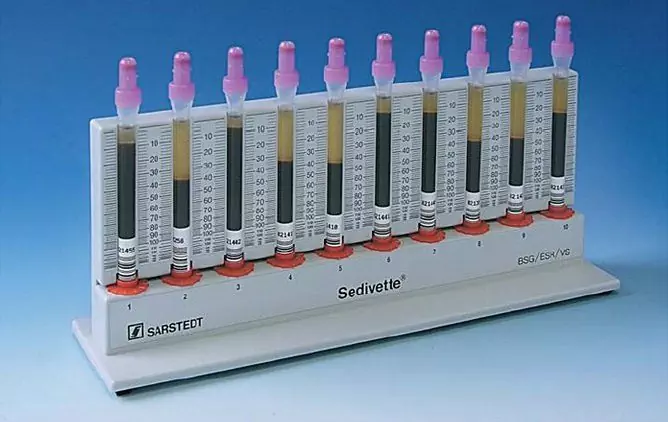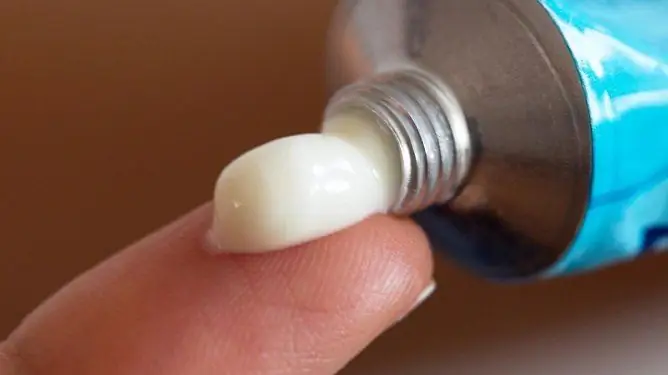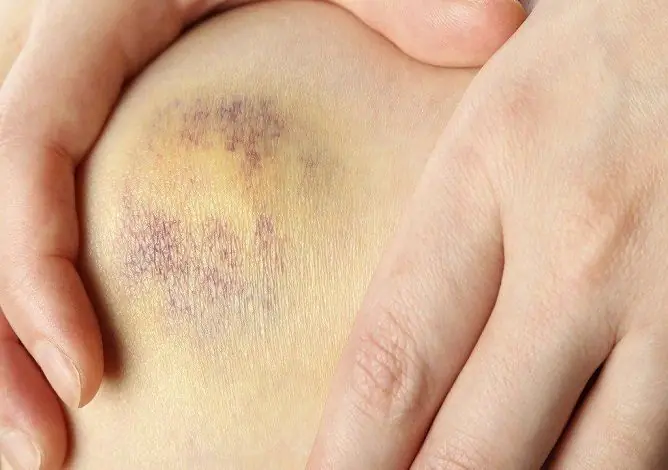- Author Rachel Wainwright [email protected].
- Public 2023-12-15 07:39.
- Last modified 2025-11-02 20:14.
Overactive bladder
The content of the article:
- Kinds
- Causes
- Signs
- Features of an overactive bladder in children
- Diagnostics
- Overactive bladder treatment
- Prevention
- Consequences and complications
An overactive bladder (overactive detrusor, OAB, OAB) is a clinical syndrome characterized by the onset of sudden urge to urinate, which is almost impossible to suppress (urgent urination), as well as an increased amount of urination (micciations). Pathology is widespread, according to statistics, it is observed in approximately 16-17% of the adult population. That is, an actually overactive bladder occurs with the same frequency as chronic bronchitis, bronchial asthma, heart disease, and arterial hypertension.

Source: menquestions.ru
Men are more likely to develop an overactive bladder with age. While in women, this clinical syndrome is more often observed at a younger age.
An overactive bladder is an urgent problem in modern urology. This is due to the fact that the loss by patients of the ability to control urination has a pronounced depressing effect on them, which eventually leads to physical, mental and social maladjustment.
Kinds
Depending on the characteristics of the pathological mechanism underlying the development of disorders of the urination process, the following types of overactive bladder are distinguished:
- detrusor hyperreflexia - damage to the nervous system leads to involuntary contractions of the bladder;
- idiopathic instability of the detrusor - it is not possible to identify an unambiguous cause of the appearance of signs of OAB.
Causes
Most experts suggest that a decrease in the number of M-cholinergic receptors (denervation) leads to the development of pathology. This is the reason for the decrease in the influence of the nervous system on the smooth muscle cells of the bladder, as a result of which close contacts are formed between them. As a result, the effect of a nerve impulse on a small area of the muscle wall is accompanied by a rapid spread of excitation to all myocytes, their sharp contraction, which becomes the cause of an imperative (urgent, uncontrolled) urge to urinate.
Causes can lead to the development of an overactive bladder. They are divided into two groups - neurogenic and non-neurogenic. The group of neurogenic causes includes:
- spinal cord injury;
- myelomeningocele;
- the consequences of surgical interventions on the spinal cord;
- spondyloarthrosis of the spine;
- osteochondrosis;
- intervertebral hernia;
- stroke;
- multiple sclerosis;
- Alzheimer's disease;
- Parkinson's disease.
Non-neurogenic causes are:
- Infravesicular obstruction - may be caused by urethral strictures or prostate adenoma. Infravesicular obstruction causes difficulty urinating, resulting in a gradual thickening of the muscle layer (hyperplasia) of the bladder wall over time, but the number of blood vessels remains unchanged. As a result, the blood flow cannot cover the needs of the muscle layer for oxygen during its contraction, which leads to hypoxia, death of nerve cells and the development of denervation;
- age - as the body ages, tissues gradually lose their reparative abilities, collagen fibers grow in them, blood flow is disturbed. All these age-related changes ultimately lead to the death of the nerve receptors of the bladder wall, that is, its denervation;
- changes in the anatomical structure of the vesicourethral segment;
- disturbances of perception (sensory disturbances) - develop against the background of increased secretion of special peptides by sensitive nerves that increase the excitability and conductivity of nerve receptors in the muscular wall of the bladder. The cause of sensory disturbances is often atrophy of the mucous membrane of the bladder, as a result of which the aggressive chemicals included in the urine irritate the cystic nerve endings much more strongly. This reason most often determines the formation of an overactive bladder in women in the climacteric and postmenopausal periods, since a lack of estrogen leads to atrophy of the mucous membranes of the genitourinary system, including the bladder.
An overactive bladder in children can form against the background of malformations of the central nervous system, spine and organs of the urinary system, as well as after a birth injury.
Signs
The main symptoms of an overactive bladder are:
- urinary incontinence;
- imperative urge to urinate;
- pollakiuria (increased frequency of urination), including nocturnal ones (nocturia).
The presence in patients of not all three of the listed symptoms at the same time, but only one or two, indicates rather not an overactive bladder, but rather some urological disease, for example, urolithiasis with the presence of calculus in the bladder cavity.
With hyperreflexia of the bladder, detrusor tone (muscular membrane) predominates, which leads to a significant increase in intravesical pressure even with a small amount of urine in it (less than 250 ml). As a result, there is frequent urination and urgency.
Other signs of a hyperreactive bladder are:
- the appearance immediately before the act of urination of vegetative symptoms (increased blood pressure, sweating, palpitations) in the absence of the urge to empty the bladder;
- difficulty in urinating freely;
- provoking urination by irritating the skin above the pubis or in the thighs.
Features of an overactive bladder in children
In young children, neurogenic hyperactivity of the bladder is manifested by the following symptoms:
- frequent urination (more than 8 times per day) in small portions;
- imperative urge;
- urinary incontinence (enuresis).
The postural form of an overactive bladder in children is manifested by daytime pollakiuria with normal nocturnal urine accumulation.
In girls, during puberty, small portions of urine may be omitted during exercise (stress urinary incontinence).
Diagnostics
Diagnosis of an overactive bladder is based on identifying characteristic signs of pathology, data from instrumental and laboratory examinations.
When examining children with an overactive bladder, it is necessary to clarify the features of the course of labor, the presence of a hereditary predisposition.
In order to exclude diseases of the genitourinary system of an inflammatory nature, patients are prescribed:
- general blood analysis;
- general urine analysis;
- biochemical analysis of blood and urine;
- Zimnitsky test;
- urine analysis according to Nechiporenko.
Instrumental diagnostics of an overactive bladder:
- cystoscopy;
- ultrasound examination of the kidneys and bladder;
- radioisotope renography;
- ascending pyelography;
- excretory urogrophy;
- vocal and conventional urethrocystography;
- uroflowmetry;
- profilometry;
- sphincterometry;
- cystometry.
If the examination does not reveal pathology on the part of the urinary tract organs, then a thorough neurological examination is performed, aimed at detecting possible diseases of the central nervous system. It includes X-ray of the spine and skull, electroencephalography, computed tomography and magnetic resonance imaging.
Overactive bladder treatment
Overactive bladder therapy is performed by a neurologist and urologist. Its scheme is determined by the cause of the pathology, the severity of the symptoms, the presence or absence of complications.
With an overactive bladder, medication, non-medication and surgical treatment are used.
Non-drug therapy includes:
- behavioral therapy;
- bladder training;
- biofeedback formation;
- electromyostimulation;
- Exercise to strengthen your pelvic floor muscles
- hyperbaric oxygenation;
- laser therapy;
- ultrasound;
- thermal applications;
- diadynamic therapy;
- normalization of water regime and sleep regime.
Drug treatment of an overactive bladder is carried out with drugs that eliminate hypoxia, improve organ circulation and reduce detrusor muscle tone. The patient can be prescribed alpha-blockers, calcium antagonists, tricyclic antidepressants, anticholinergics. Effective is the use of botulinum toxin, which is injected into the wall of the urethra or bladder.
Additionally, drugs are prescribed that have antioxidant and antihypoxic effects (coenzyme forms of vitamins, N-nicotinoyl-gamma-aminobutyric acid, hopantenic acid, L-carnitine, succinic acid).
Surgical treatment of an overactive bladder is rarely used. The indication for it is severe urinary incontinence with the ineffectiveness of adequate conservative therapy, carried out for at least 2-3 months. The main types of surgical interventions for this pathology are:
- detrusor myectomy (allows you to increase the volume of the bladder, thereby reducing intravesical pressure);
- plastic of the bladder with a section of the large or small intestine.
In children, bladder hyperactivity in most cases goes away with age. The incidence of this pathology after reaching the age of five decreases annually by 15%. Therefore, children are usually prescribed non-drug treatment, including:
- teaching the child to empty the bladder at regular intervals;
- training in complete emptying of the bladder;
- exclusion from the diet of foods and drinks rich in caffeine, as they contribute to the formation and progression of an overactive bladder in children (coffee, cocoa, strong tea, coca-cola, pepsi-cola, energy drinks, chocolate);
- creating a friendly and calm environment around the child.
Prevention
Prevention of an overactive bladder includes:
- playing sports to strengthen the muscles of the pelvic floor and back;
- control of body weight;
- refusal to abuse caffeine-containing drinks;
- medical examination, which allows timely detection and treatment of diseases that can cause overactive bladder.
Consequences and complications
Disorders of urination can limit both the physical and mental activity of the patient, ultimately becoming the cause of a violation of his social adaptation.
In the absence of the necessary treatment, an overactive bladder can lead to the development of a number of complications that require long and serious treatment:
- pelvic venous congestion syndrome;
- myofascial syndrome;
- secondary inflammatory-dystrophic diseases of the urinary system (pyelonephritis, chronic cystitis, vesicoureteral reflux), which, in turn, cause nephrosclerosis, persistent arterial hypertension and the gradual development of chronic renal failure.
YouTube video related to the article:

Elena Minkina Doctor anesthesiologist-resuscitator About the author
Education: graduated from the Tashkent State Medical Institute, specializing in general medicine in 1991. Repeatedly passed refresher courses.
Work experience: anesthesiologist-resuscitator of the city maternity complex, resuscitator of the hemodialysis department.
The information is generalized and provided for informational purposes only. At the first sign of illness, see your doctor. Self-medication is hazardous to health!






